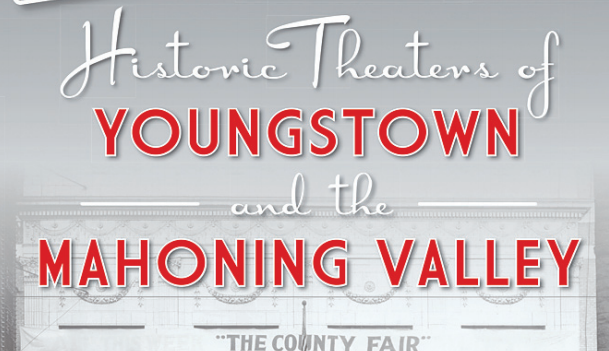Book shares history of Youngstown's film, live entertainment venues

By GUY D’ASTOLFO
YOUNGSTOWN
In researching his first book, “Lost Youngstown,” which was a history of the city, local author-historian Sean T. Posey said the topic of theaters kept coming up again and again.
“It was an important part of people’s lives, especially in the time right after World War II,” said Posey. “[Theaters] played a central role in people’s entertainment life. ... I wanted to include more theaters [in the first book] but I decided to just do a whole book on theaters.”
Posey continued his research into the area’s theaters, and the result is his second book – “Historic Theaters of Youngstown and the Mahoning Valley,” which will be released Monday by Arcadia Publishing and History Press.
The glossy trade paperback book has 160 pages and dozens of photos.
The book, said Posey, shows the evolution of theaters in the 20th century, using Youngstown as a template.
In Youngstown’s steelmaking heyday, it boasted several impressive downtown theaters, including the Warner, the Paramount, the Palace and the State. About a dozen more dotted the city’s neighborhoods and outlying cities – Warren, Niles, Campbell, Struthers, Canfield and Girard.
A few are still standing, although only the Warner – now Powers Auditorium – is still used as a theater. These include the Uptown, the Wilson in Campbell, the Schenley on the West Side, the Wellman in Girard and the Robins and the Duchess in Warren.
The book also has chapters on the Mahoning Valley’s nine drive-in theaters, and its bawdy burlesque theaters.
Posey shares the history of each venue, with vignettes about the people and places who visited as workers, patrons or stage stars.
Many theaters started as venues for live theater, including touring companies. The biggest stars of the day, including Katharine Hepburn, Red Skelton and Al Jolson, graced their stages. Vaudeville acts and the risque stars of burlesque also made Youngstown a regular stop.
Youngstown’s most famous theater is the Warner, and Posey devotes a chapter to it. Built as an exceptionally ornate movie palace, it was an early jewel in the movie empire built by the Warner brothers, who started in their hometown of Youngstown before moving to California, where they founded the famed Warner Bros. studio.
Because the Warner was built as a movie theater, it did not have a stage. When it was restored as a home for the Youngstown Symphony Orchestra in 1969, a stage was added.
“A lot of people don’t realize the Warner was just a movie theater,” said Posey. “They never had stage shows there. When they saved it, they had to build a stage and change the acoustics.”
Posey researched the book by poring over microfilm copies of past issues of The Vindicator, talking to folks who remember the theaters and also going through information at the Mahoning Valley Historical Society.
The author, who works at The Business Journal, has a master’s degree in history from Youngstown State University.
“Historic Theaters of Youngstown” ($21.99) will be sold at area retailers and online at arcadiapublishing.com.
 43
43
